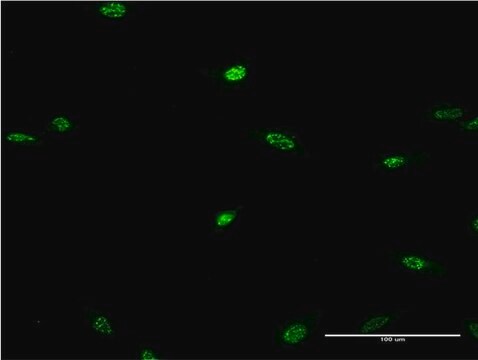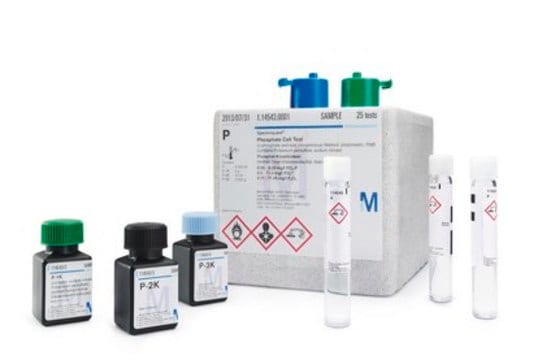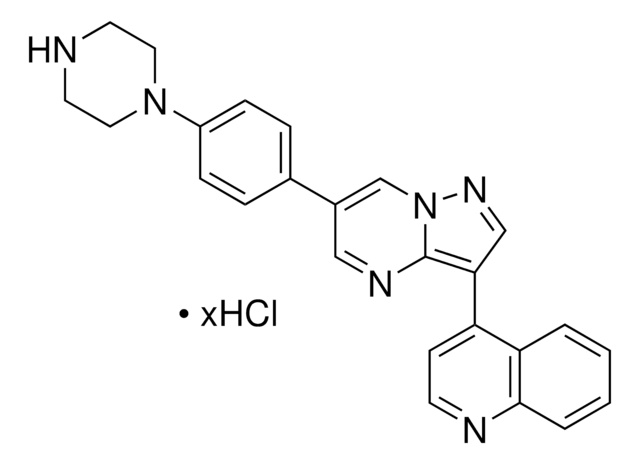ABE1402
Anti-LHX2 Antibody
serum, from rabbit
Synonim(y):
LIM/homeobox protein Lhx2, Homeobox protein LH-2, LIM homeobox protein, LHX2
About This Item
Polecane produkty
pochodzenie biologiczne
rabbit
Poziom jakości
forma przeciwciała
serum
rodzaj przeciwciała
primary antibodies
klon
polyclonal
reaktywność gatunkowa
mouse, human
metody
ChIP: suitable (ChIP-seq)
immunofluorescence: suitable
western blot: suitable
numer dostępu NCBI
numer dostępu UniProt
Warunki transportu
dry ice
docelowa modyfikacja potranslacyjna
unmodified
informacje o genach
mouse ... Lhx2(16870)
Opis ogólny
Immunogen
Zastosowanie
Chromatin Immunoprecipitation Analysis: A representative lot detected Lhx2-targeted promoter and enhancer regions using α6hi/CD34+ skin cells enriched in hair follicle stem cells (HF-SCs) from mice at the second telogen developmental stage (Folgueras, A.R., et. al. (2013). Cell Stem Cell. 13(3):314-327).
Chromatin Immunoprecipitation-Sequencing Analysis: A representative lot detected Lhx2-targeted promoter and enhancer regions by a genome-wide ChIP-seq analysis using α6hi/CD34+ skin cells enriched in hair follicle stem cells (HF-SCs) from mice at the second telogen developmental stage (Folgueras, A.R., et. al. (2013). Cell Stem Cell. 13(3):314-327).
Immunofluorescence Analysis: A representative lot (1:1,000 dilution) detected Lhx2 immunoreactivity in human skin samples by fluorescent immunohistochemistry using OCT-embedded, PFA-fixed cryosections (Data courtesy of Dr. Elaine Fuchs, Howard Hughes Medical Institute, The Rockefeller University ).
Epigenetics & Nuclear Function
Nuclear Receptors
Jakość
Western Blotting Analysis: A 1:5,000 dilution of this antibody detected doxycycline-induced LHX2 expression in 10 µg of Murine keratinocyte K14rtTA-LHX2-TRE cell lysate.
Opis wartości docelowych
Postać fizyczna
Przechowywanie i stabilność
Handling Recommendations: Upon receipt and prior to removing the cap, centrifuge the vial and gently mix the solution. Aliquot into microcentrifuge tubes and store at -20°C. Avoid repeated freeze/thaw cycles, which may damage IgG and affect product performance.
Inne uwagi
Oświadczenie o zrzeczeniu się odpowiedzialności
Nie możesz znaleźć właściwego produktu?
Wypróbuj nasz Narzędzie selektora produktów.
Kod klasy składowania
12 - Non Combustible Liquids
Klasa zagrożenia wodnego (WGK)
WGK 1
Temperatura zapłonu (°F)
Not applicable
Temperatura zapłonu (°C)
Not applicable
Certyfikaty analizy (CoA)
Poszukaj Certyfikaty analizy (CoA), wpisując numer partii/serii produktów. Numery serii i partii można znaleźć na etykiecie produktu po słowach „seria” lub „partia”.
Masz już ten produkt?
Dokumenty związane z niedawno zakupionymi produktami zostały zamieszczone w Bibliotece dokumentów.
Nasz zespół naukowców ma doświadczenie we wszystkich obszarach badań, w tym w naukach przyrodniczych, materiałoznawstwie, syntezie chemicznej, chromatografii, analityce i wielu innych dziedzinach.
Skontaktuj się z zespołem ds. pomocy technicznej







